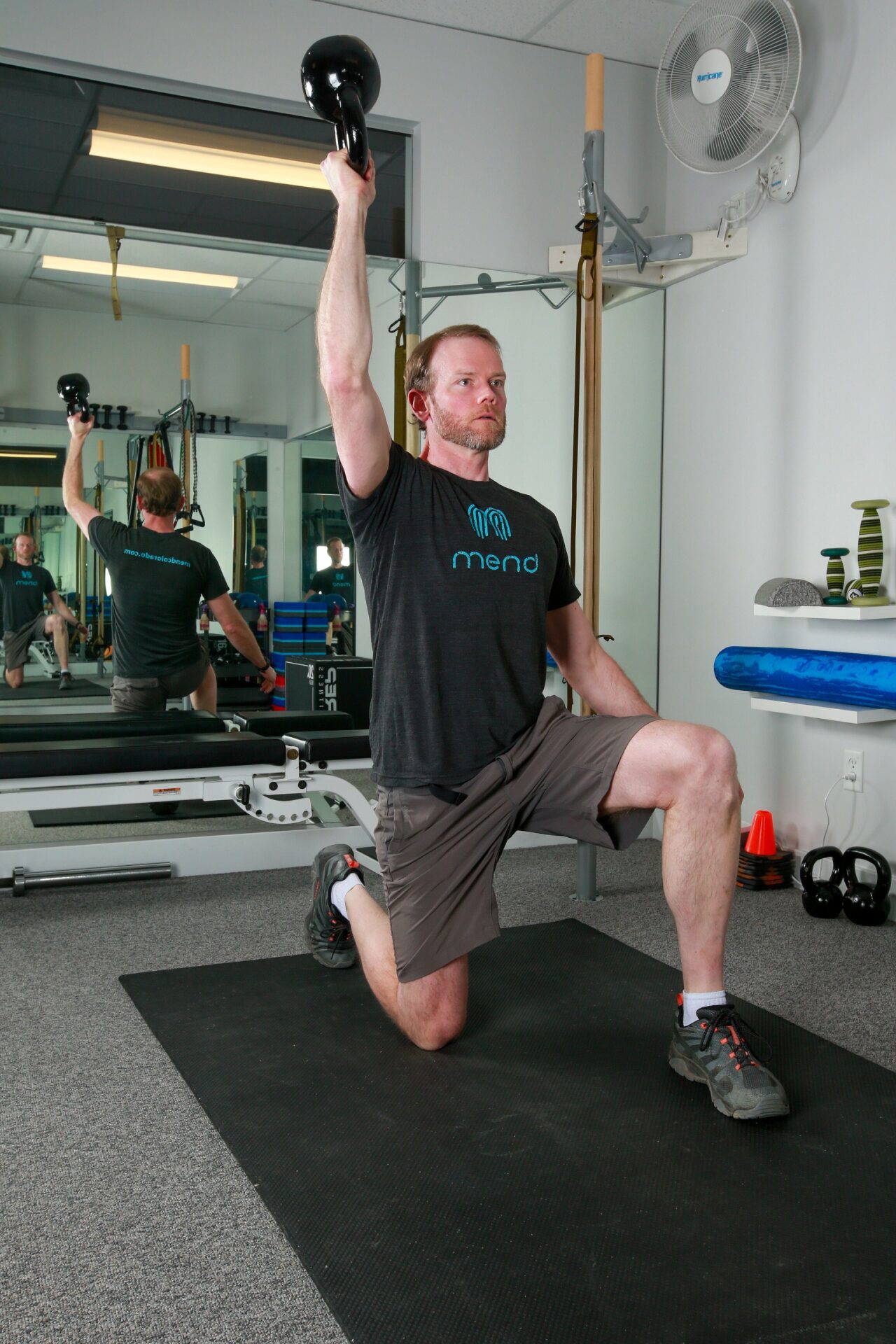When you see a CrossFit, weight training, or gym workout posted with overhead press, push press or jerks, and your first thought is that you are concerned about how your back will fair, then this post is for you. When pressing a barbell (or any object) directly overhead it is necessary to have a strong, stable, and symmetrically balanced base. If the demands placed on the posterior chain musculature are high, this can lead to early spinal erector muscle fatigue, sensation of back tightness, and ultimately limited performance or injury. Below are some common scenarios leading to low back issues with overhead weight training:
1. Limited Thoracic Extension
To press and hold load overhead, the spine needs to extend equally from neck to tailbone. If one does not have sufficient back bend mobility through each level of the spine, then some areas are forced to move more than they would like. If the mid back thoracic spine is limited, then the lumbar spine must pick up the slack. While under load, the forces are increased, and this demand can lead to discomfort in the low back.
2. Poor Eccentric Abdominal Control
To support the overhead load the trunk, core and hips need to be stable. A strong trunk has equal parts stabilization from the anterior (abdominal and hip flexor) and posterior (spinal erector and gluteus) muscles. The trunk must remain stable, and all these muscles must participate in all spinal positions. In the overhead press, the spine will move from neutral toward extension when the load moves overhead. Low back tightness and increased demand of the spinal erectors occurs if the anterior abdominal muscles do not have the strength or control to support the trunk from the front side as they are lengthening into extension.
3. Limited Glenohumeral Flexion
The shoulder needs to have full 180 degrees of flexion mobility to allow a press directly overhead. If the shoulder lacks mobility in the glenohumeral joint the body will have to compensate from somewhere else. This compensation often comes from the low back to allow a straight arm press directly upward perpendicular to gravity. A small 5 degree mobility deficit in the shoulder can result in significant stress to the low back. Consider the compound effect on low back musculature to support the spine moving 5 degrees repeatedly when trying to push press our body weight. This can quickly lead to fatigue and discomfort in the low back.
4. Poor Bar Path Mechanics
There are 2 common times a small bar path deviation can place significant demand on the low back. First, when we first begin the press, If the bar moves forward then low back must work harder to keep the torso upright and back bend to correct course and allow the bar overhead. Second, if the bar drifts backward once above head, even a small 1” deviation can significantly increase the joint force through the low back and lead to discomfort.
If you encounter low back tightness or limitations in your CrossFit, or gym workouts, or if you have questions on how to address the above issues, contact us at MEND Physical Therapy. We have offices in Boulder and Lafayette, Colorado. Our CrossFit specialists will identify your limitations in the specific CrossFit moves that give you trouble and provide an individualized plan to address them.

